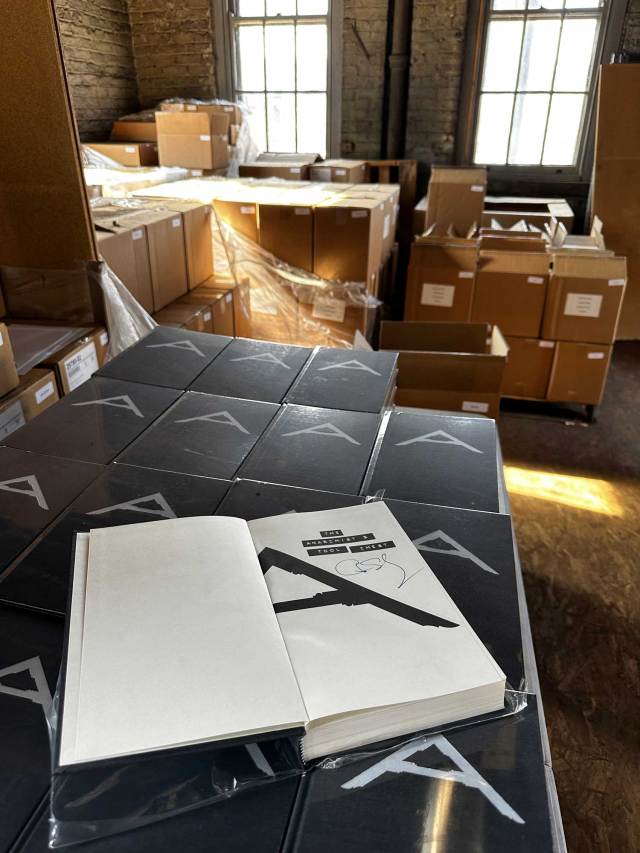
When we released “The Anarchist’s Tool Chest” (almost 13 years ago to this day), the goal was to create a book that looked like an odd old text that you might find on a library shelf in the basement. We chose a vintage tan cover cloth, binding process and diestamp that all fed into that look.
Unfortunately, the printer had difficulty with the manufacturing. The glue that reinforced the signatures was either spooged on or non-existant. The endsheets weren’t glued right, so some of the books were bound too tight. Others were too loose. Some books fell apart (we replaced those). All in all, it was a bit of a let-down after two years of work on the text.
After that, we spent a long time working with the press people to get results we are both happy with.
Today we are releasing the final printing of the first edition of “The Anarchist’s Tool Chest,” and we decided to return to that original look to see if we could nail it this time. If you ever wanted to get a copy of ATC that looks like the original, this is your (last) chance.
All copies of this book that are purchased from Lost Art Press will be autographed by me.
This is the 16th printing of “The Anarchist’s Tool Chest,” We’ve sold 45,000 copies of the book. And the last 2,000 that arrived today will mark the end of this edition.
In time, it will be replaced by a new edition that will be redesigned, printed in color and revised to reflect the changes in the marketplace and in the tools in my chest. I don’t know when this new edition will be released. Probably in 2025 or 2026 (the 15th anniversary of the book). It’s something I have been working toward for a couple years.
The chest itself will remain unchanged in the new edition. But Megan Fitzpatrick and I have devised dozens of improved methods to make the work easier. These will be in the new edition. And I might add a new coat of paint to the old boy. It has seen a lot of work.
The final tan edition is now available in our store.
— Christopher Schwarz









